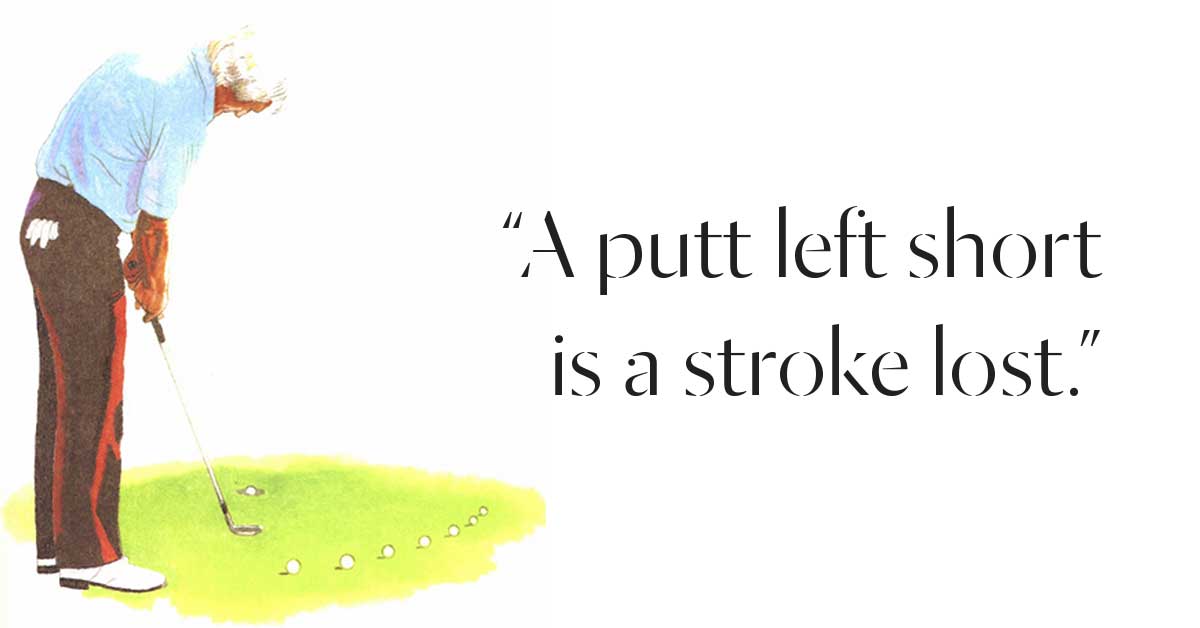Amatuer golfers should putt more boldly than pros. In fact, I think you should never lag a putt – you should try to sink every putt you face. For several reasons.
There are only four ways to miss a putt – long, short, left, or right. If you always get the ball to the hole, you eliminate one way. Besides, research has proved that the putt that has the best chance of going in is one that is struck with sufficient force to carry it 40 centimetres beyond the cup.
Along with this goes the psychological side. Think about the last time you missed several putts in a row by hitting them dead in the jaws of the hole but leaving them just short. Pretty frustrating wasn’t it? Such chronic shortness can get to you, whereas hitting the ball consistently past the cup is rarely as unsettling.
Remember that if you hit the ball a bit too hard, you can watch the way it rolls as it passes the hole, getting an immediate read on the return putt, but if you leave it short, you have no such knowledge for the last metre of the putt. Also, on short putts, a bold, firm hit is usually best, as it tends to take the guesswork out of the break in the putt.
Furthermore, a bold stroke is a confident stroke, one with built-in acceleration through impact, a stroke that works on any type of green surface, fast or slow, bent or Bermuda. Aggressiveness on the green is also an asset in matchplay. On the pro tour, if we sink a long putt it merely means saving one stroke out of 72 holes. In your weekend game, however, a long putt will invariably win you one of the 18 holes, while having a jarring effect on your opponent.
Finally, and perhaps most important, amateur players can recover from a short drive with a good approach, or from a short approach with a good pitch. But there is no recovery on the putting green. A putt left short is a stroke lost. So don’t cheat yourself in the area where you have every capability to be proficient and every reason to be aggressive. Putt boldly.

The Ultimate Nerve Test
I practise hitting short putts, not to hone my technique but to hone my nerves. I do this through a practice game that I recommend to you.
It’s very simple. Try to make 25 short putts in a row. Start with two-footers – and that’s not as easy as it may sound. When you get close to No.25, the tension will be palpable, especially if you’ve made a promise to not leave the practice green until you’ve made 25 in a row.
Once you’ve made all the two-footers, move up to three-footers (and plan to be out on the green for a while). When I have an all-out practice session, I’ll also go on to four-footers, and on rare occasions I’ll even get as far as the five and six-footers. I’ve made 25 consecutive six-footers only a couple of times in my life, but on those occasions, I can assure you, I left the practice green with tremendous confidence in my putting and my nerves.




